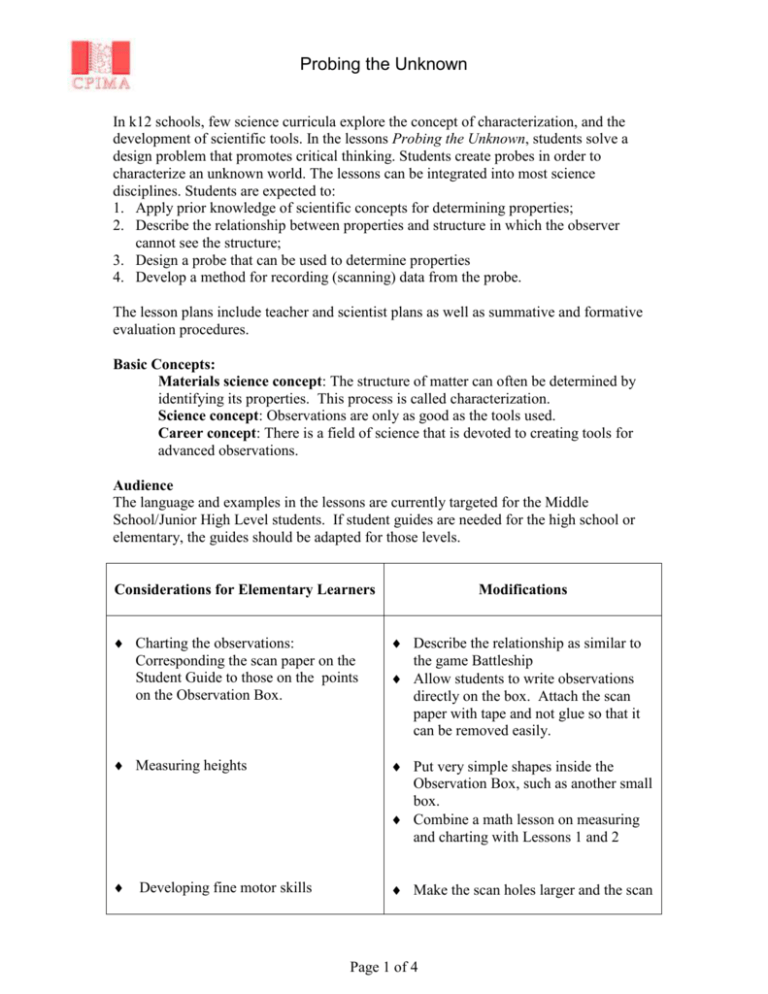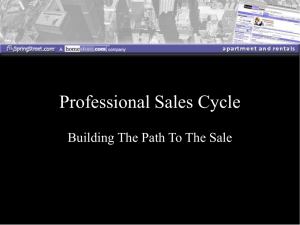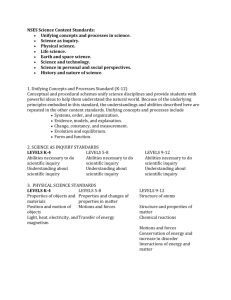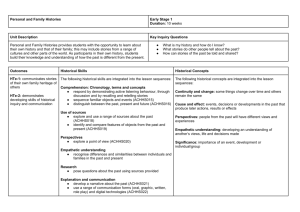Probe.overview.rev
advertisement

Probing the Unknown In k12 schools, few science curricula explore the concept of characterization, and the development of scientific tools. In the lessons Probing the Unknown, students solve a design problem that promotes critical thinking. Students create probes in order to characterize an unknown world. The lessons can be integrated into most science disciplines. Students are expected to: 1. Apply prior knowledge of scientific concepts for determining properties; 2. Describe the relationship between properties and structure in which the observer cannot see the structure; 3. Design a probe that can be used to determine properties 4. Develop a method for recording (scanning) data from the probe. The lesson plans include teacher and scientist plans as well as summative and formative evaluation procedures. Basic Concepts: Materials science concept: The structure of matter can often be determined by identifying its properties. This process is called characterization. Science concept: Observations are only as good as the tools used. Career concept: There is a field of science that is devoted to creating tools for advanced observations. Audience The language and examples in the lessons are currently targeted for the Middle School/Junior High Level students. If student guides are needed for the high school or elementary, the guides should be adapted for those levels. Considerations for Elementary Learners Modifications Charting the observations: Corresponding the scan paper on the Student Guide to those on the points on the Observation Box. Describe the relationship as similar to the game Battleship Allow students to write observations directly on the box. Attach the scan paper with tape and not glue so that it can be removed easily. Measuring heights Put very simple shapes inside the Observation Box, such as another small box. Combine a math lesson on measuring and charting with Lessons 1 and 2 Developing fine motor skills Make the scan holes larger and the scan Page 1 of 4 Probing the Unknown paper larger Using a glue gun safely Creating a world that other students could probe Reading the Student Guides Use a cold glue gun; use regular glue Limit the variety of materials students can be used to create their world Obtain the Word documents from Marni Goldman, and modify them as needed. Considerations for High School Learners Modifications Activity is too simple and is viewed as busy work Combine Lessons 1 and 2 Increase the number of materials used to create the unknown world Encourage application of past science concepts to making the probes Instead of making an unknown world in the boxes, have the students probe something that is an authentic environment i.e. bodies of water, computer Overall Goals for the Students Apply scientific knowledge of determining properties from past experience and those that are learned in the classroom. Characterize matter - describe the relationship between properties and structure. Determine instruments used for probing in science. Create a probe for characterization. Characterize a "planet" based on the probe. Analyze the probes. Compare their probes to those used by scientists. Distinguish needs and qualities of different probes. Question and predict scientific instrumentation of the future. National Standards: The National Science Education Standards was first published in 1995 by the National Research Council and is constantly being updated. The national science education standards that will be met as a result of the lessons include but are not limited to the following: Page 2 of 4 Probing the Unknown For Elementary Schools: Content Standard A - abilities necessary to do scientific inquiry p. 122 - understanding about scientific inquiry p. 123 Content Standard B - objects have many observable properties including size, weight, shape, color, temperature, and the ability to react with other substances. Those properties can be measured using tools, such as rules, balances, and thermometers. p. 127 - objects are made of one or more materials, such as paper, wood, and metal. Objects can be described by the properties of the materials from which they are made and those properties can be sued to separate of sort a group of objects or materials. Content Standard E - abilities of technological design p. 137 - understanding about science and technology p. 138 (Tools help scientists make better observations, measurements, and equipment for investigations) (People have always had problems and invented tools and techniques to solve problems. Trying to determine the effects of solutions helps people avoid some new problems) Content Standard F - science and technology in local challenges p. 140 (People continue inventing new ways of doing things, solving problems, and getting work done) Content Standard G - science as a human endeavor p. 141 (Although men and women using scientific inquiry have learned much about the objects, events, and phenomena in nature, much more remains to be understood. Science will never be finished) (Many people choose science as a career and devote their entire lives to studying it. Many people derive great pleasure from doing science) For Middle/Junior High Schools: Content Standard A - abilities necessary to do scientific inquiry p. 147 - understanding about scientific inquiry p. 148 Content Standard E - abilities of technological design p. 165 - understanding about science and technology p. 166 Content Standard F - science and technology in society p. 169 Content Standard G - science as a human endeavor p. 170 - nature of science knowledge p. 171 For High School: Content Standard A Content Standard E Content Standard G - abilities necessary to do scientific inquiry p. 175 - understanding about scientific inquiry p. 176 - abilities of technological design p. 192 - understanding about science and technology p. 192 - science as a human endeavor p. 200 - nature of science knowledge p. 201 Page 3 of 4 Probing the Unknown For High School: Content Standard A Content Standard E Content Standard G - abilities necessary to do scientific inquiry p. 175 - understanding about scientific inquiry p. 176 - abilities of technological design p. 192 - understanding about science and technology p. 192 - science as a human endeavor p. 200 - nature of science knowledge p. 201 Page 4 of 4









